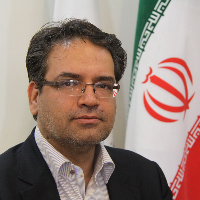Attachment to Iranian -Islamic neighborhood: a qualitative Study (Ekhtiarieh, Tehran)
In the Iranian-Islamic city, the neighborhood is the creator of the individuals’ identity and the sense of attachment and belonging in the residents. These neighborhoods, during the rapid expansion of urbanization and the dominance of engineering discourse in urban development, have changed the spatial structure and social organization and the weakening of psychological ties between people and neighborhoods, which has led to decline in social participation, social capital and weakening of neighborhood identity. Based on the survey of Tehran Municipality (2017), Ekhtiarieh neighborhood is one of the top 10 neighborhoods in Tehran, where a high level of attachment and belonging of residents to the neighborhood and the relative stability of living has been documented. The current article aims to distinguish the psychological nature of this bond by studying the lived experience of the residents of Ekhtiarieh and also to identify the effective components on the formation and reproduction of attachment to the neighborhood. Accordingly, via adopting a qualitative strategy and grounded theory as the research method and using purposeful and theoretical sampling technique, 24 residents of Ekhtiarieh were selected as research participants in the data collection process through a combination of in-depth interview tools, questionnaires, cognitive map, and documentary studies. Data analysis was performed simultaneously, nonlinearly, and with open, axial, and selective coding techniques. The research results revealed that attachment to the neighborhood is experienced as an extension of the sense of home on a neighborhood scale in emotional, cognitive-perceptual, and behavioral dimensions. The emotional dimension of attachment to the neighborhood is perceived with pride, the grief caused by leaving the neighborhood, psychological well-being, and sense of belonging and membership, and the cognitive-perceptual dimension of attachment are understood by the maturity of emotional bond, social self-formation, transformation in the semantic system of place, and sense of ownership in the neighborhood and the local community. Attachment is represented by the behavioral patterns of, adaptive proximity seeking, sociability, collective action, and seeking similarity. Also, attachment to the home, self-determination, place identity, visual-auditory pleasurableness, place value, connecting places and events, place responsiveness, and unchanging places are reinforcing factors of attachment to Ekhtiarieh.
- حق عضویت دریافتی صرف حمایت از نشریات عضو و نگهداری، تکمیل و توسعه مگیران میشود.
- پرداخت حق اشتراک و دانلود مقالات اجازه بازنشر آن در سایر رسانههای چاپی و دیجیتال را به کاربر نمیدهد.


